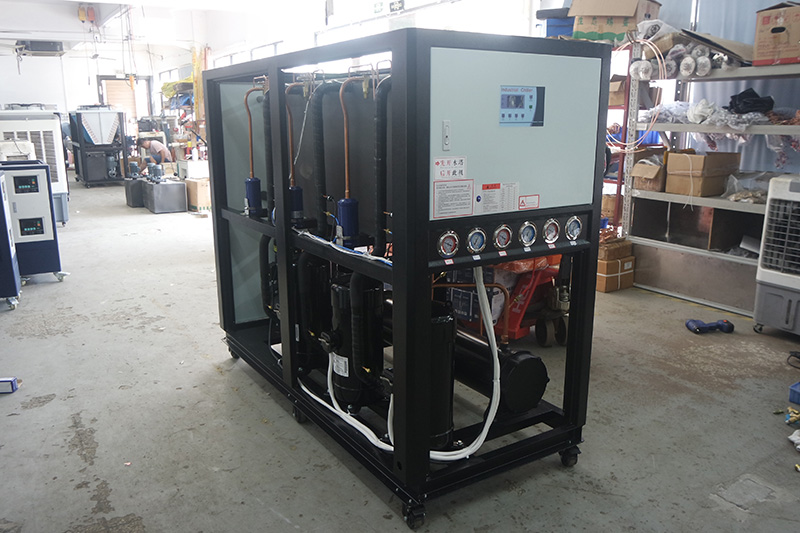Air-Cooled Chillers and Water-Cooled Chillers: Two Pillars in the Refrigeration Field
July 31,2025
In modern industrial production and commercial applications, chillers, as key refrigeration equipment, are widely used in numerous industries such as pharmaceuticals, chemicals, electronics, food, and air conditioning systems. Air-cooled chillers and water-cooled chillers, as the two mainstream types in the chiller family, each play an important role in different application scenarios with their unique advantages and characteristics. Next, let's have an in-depth understanding of these two types of chillers.
Air-cooled Chillers: Convenient and Flexible Refrigeration Pioneers
Air-cooled chillers cool room-temperature water via a compressor to enhance cooling for molds or machines, comprising three key systems: refrigerant circulation (liquid refrigerant evaporates in the evaporator, is compressed, condenses in the condenser, and throttles back), water circulation (pump delivers water to equipment, which returns after absorbing heat), and electrical control (powers components and automates operation/protection). They feature easy installation (no cooling tower needed, compact and movable, ideal for water-scarce areas), stable performance (quality components, safety devices, low noise, long life, user-friendly interface), energy efficiency (some with multi-compressor systems adapting to loads), and strong adaptability (suitable for cooling various equipment like CNC machines and laser tools). However, they have lower COP (2.6-3.3), require good ventilation, and their cooling capacity drops in high-temperature workshops.
Water-cooled Chillers: Efficient and Stable Refrigeration Mainstays
Water-cooled industrial chillers, or water-cooled box-type units, use water as a heat exchange medium with a cooling tower. Their refrigerant circulation is similar to air-cooled ones, with cooling water dissipating heat via the tower. Structurally, they include a chilled water tank, pump, unit, cooling tower, and pipes, usable after connecting pipes and 380V power. They offer efficient refrigeration (higher energy efficiency by 300-500kcal/h than air-cooled due to water's properties), precise temperature control (5°C-35°C, suited for processes like plastic molding), stable operation (efficient heat exchangers, safety systems), and wide application (medical, food, chemical, etc.). But they need auxiliary equipment (larger footprint, complex installation), require good water quality to prevent scaling/blockages, and demand regular maintenance.
In conclusion, air-cooled chillers and water-cooled chillers have their own advantages and disadvantages. In practical applications, users should comprehensively consider their specific needs, installation environment, operating costs and other factors to choose the most suitable type of chiller, so as to achieve efficient, stable and economical refrigeration effects. With the continuous progress and innovation of refrigeration technology, air-cooled chillers and water-cooled chillers will also continue to optimize and upgrade in terms of performance, energy saving, environmental protection, etc., providing more reliable and efficient refrigeration solutions for the development of various industries.

